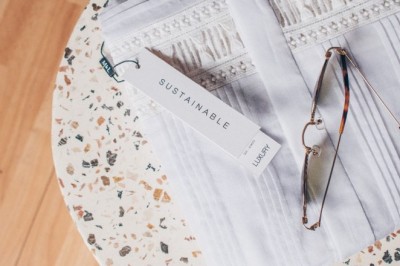views

In today's rapidly evolving world, sustainability has become a critical concern across various industries. The fashion industry, in particular, has witnessed a significant shift towards adopting sustainable practices. As consumers become more environmentally conscious, the demand for greener fashion choices has soared. One crucial aspect of sustainable fashion is the use of eco-friendly fibres that minimize the industry's ecological impact. In this article, we explore the importance of sustainable fibres and their role in creating a greener fashion industry.
Understanding Sustainable Fibres
Sustainable fibres are materials derived from renewable resources, produced using environmentally friendly methods, and designed to minimize harm to the environment. These fibres address the ecological concerns associated with traditional textile production, offering an alternative that aligns with the principles of sustainability. Let's delve into some of the most popular sustainable fibres transforming the fashion landscape:
1. Organic Cotton
Organic cotton is grown without the use of synthetic pesticides, fertilizers, or genetically modified organisms (GMOs). It is cultivated using natural and eco-friendly methods, promoting soil health and biodiversity. By opting for clothing made from organic cotton, consumers can support sustainable farming practices and reduce their environmental footprint.
2. Hemp
Hemp is a versatile and sustainable fibre derived from the Cannabis sativa plant. It requires minimal water, pesticides, and synthetic fertilizers to grow, making it an excellent choice for eco-conscious fashion. Hemp fibres are known for their durability, breathability, and resistance to pests, reducing the need for chemical interventions during cultivation.
3. Tencel (Lyocell)
Tencel is a brand of lyocell fibre made from sustainably sourced wood pulp. The production process of Tencel involves a closed-loop system, where the solvents used are recycled, minimizing waste and reducing water consumption. Tencel fibres are renowned for their softness, breathability, and biodegradability, making them a preferred choice for sustainable fashion brands.
4. Recycled Polyester
Recycled polyester, also known as rPET, is made from post-consumer plastic bottles. It involves the collection and processing of discarded plastic, which is then transformed into polyester fibres. By diverting plastic waste from landfills and oceans, recycled polyester contributes to reducing pollution and conserving resources. Additionally, it offers the same performance and versatility as virgin polyester.
Benefits of Sustainable Fibres
The adoption of sustainable fibres in the fashion industry presents numerous benefits for the environment, society, and consumers. Let's explore the advantages of incorporating sustainable fibres into fashion production:
1. Reduced Environmental Impact
Sustainable fibres significantly reduce the environmental impact of fashion production. By using materials derived from renewable resources and employing eco-friendly manufacturing processes, the fashion industry can minimize water consumption, energy usage, and carbon emissions. This shift towards sustainability contributes to the preservation of natural resources and the mitigation of climate change.
2. Conservation of Natural Resources
Sustainable fibres prioritize the responsible use of natural resources. Through practices like organic farming, water-efficient processing, and recycling, these fibres reduce the depletion of water sources, protect biodiversity, and decrease reliance on non-renewable resources. This approach promotes the long-term viability of ecosystems and fosters a harmonious relationship between fashion and nature.
3. Ethical and Social Responsibility
Sustainable fibres embrace ethical and social responsibility throughout the supply chain. They support fair trade practices, ensure safe working conditions, and promote fair wages for workers involved in fibre production. By choosing garments made from sustainable fibres, consumers contribute to a fashion industry that respects human rights and empowers communities.
4. Consumer Demand and Market Opportunities
As sustainability becomes a driving force in consumer decision-making, the demand for sustainable fashion continues to grow. By incorporating sustainable fibres into their offerings, fashion brands can meet this demand and tap into a burgeoning market segment. This presents an opportunity for brands to attract environmentally conscious consumers and establish themselves as leaders in the sustainable fashion space.
Conclusion
The adoption of sustainable fibres is a crucial step towards creating a greener fashion industry. By choosing garments made from organic cotton, hemp, Tencel, or recycled polyester, consumers can contribute to environmental conservation, support ethical practices, and drive positive change within the fashion ecosystem. Sustainable fibres offer a pathway to a more sustainable future, where fashion and environmental stewardship go hand in hand.
FAQs
Q: Are sustainable fibres more expensive than conventional fibres?
A: While sustainable fibres may sometimes have a slightly higher price point due to their eco-friendly production processes, the cost difference is gradually decreasing as sustainability becomes more mainstream. Additionally, investing in durable and timeless pieces made from sustainable fibres can offer long-term value.
Q: Can sustainable fibres be used in various types of clothing?
A: Yes, sustainable fibres can be used in a wide range of clothing items, including shirts, dresses, jeans, activewear, and more. Sustainable fashion brands offer diverse options to cater to different styles and preferences.
Q: How can I identify clothing made from sustainable fibres?
A: Look for certifications and labels such as Global Organic Textile Standard (GOTS), Fair Trade Certified, or Bluesign that indicate sustainable practices and materials. Many sustainable brands also provide detailed information about their sourcing and production processes on their websites.
Q: Can sustainable fibres be recycled or composted?
A: Yes, many sustainable fibres are biodegradable or recyclable. Fibres like organic cotton, hemp, and Tencel can be composted, while others like recycled polyester can be recycled into new products. Proper disposal and recycling practices help close the loop in the fashion industry.
Q: How can I contribute to a greener fashion industry as a consumer?
A: As a consumer, you can make a positive impact by choosing garments made from sustainable fibres, shopping second-hand or vintage, repairing and maintaining your clothing, and supporting brands that prioritize sustainability. Every small step towards conscious consumption contributes to a greener fashion industry.











Comments
0 comment